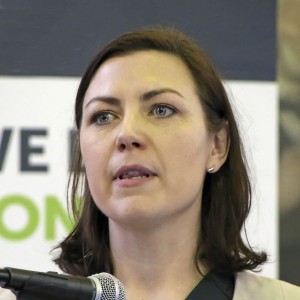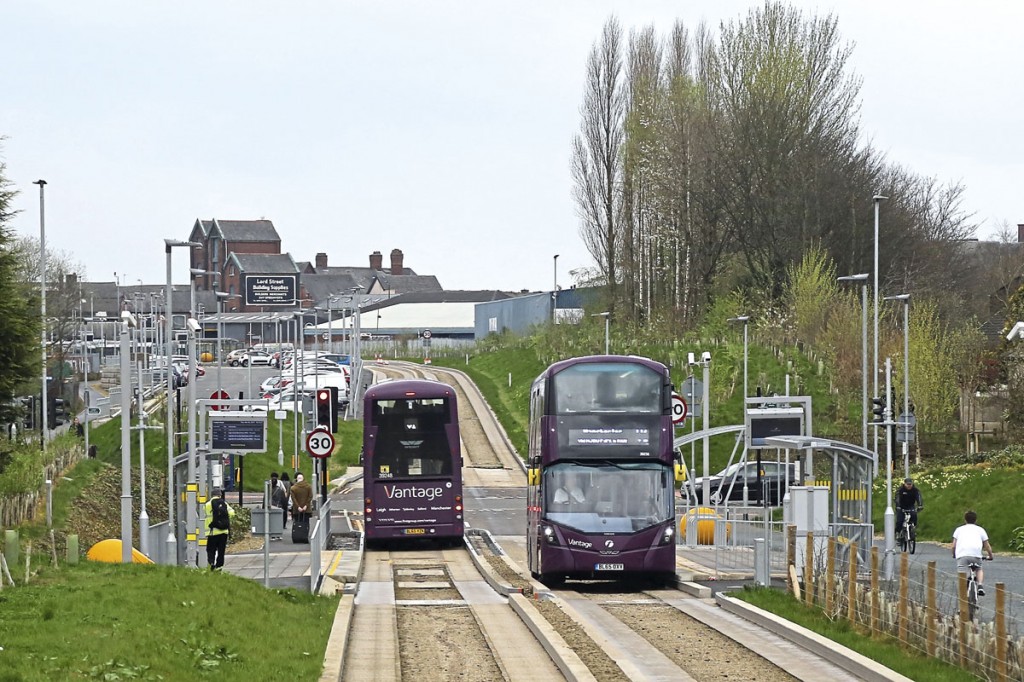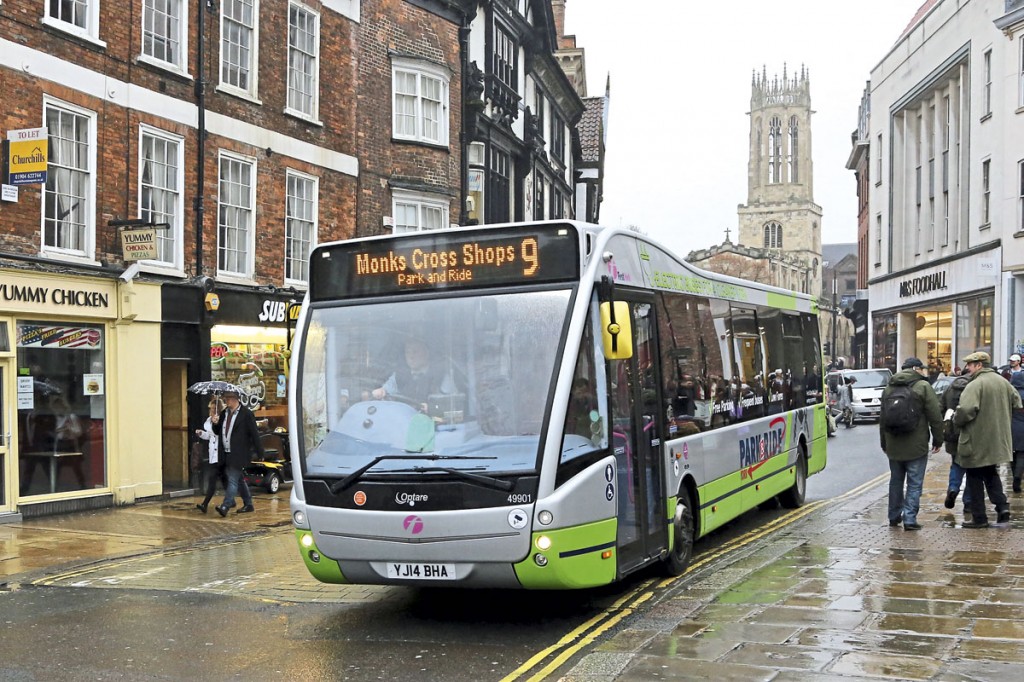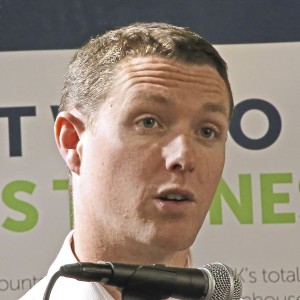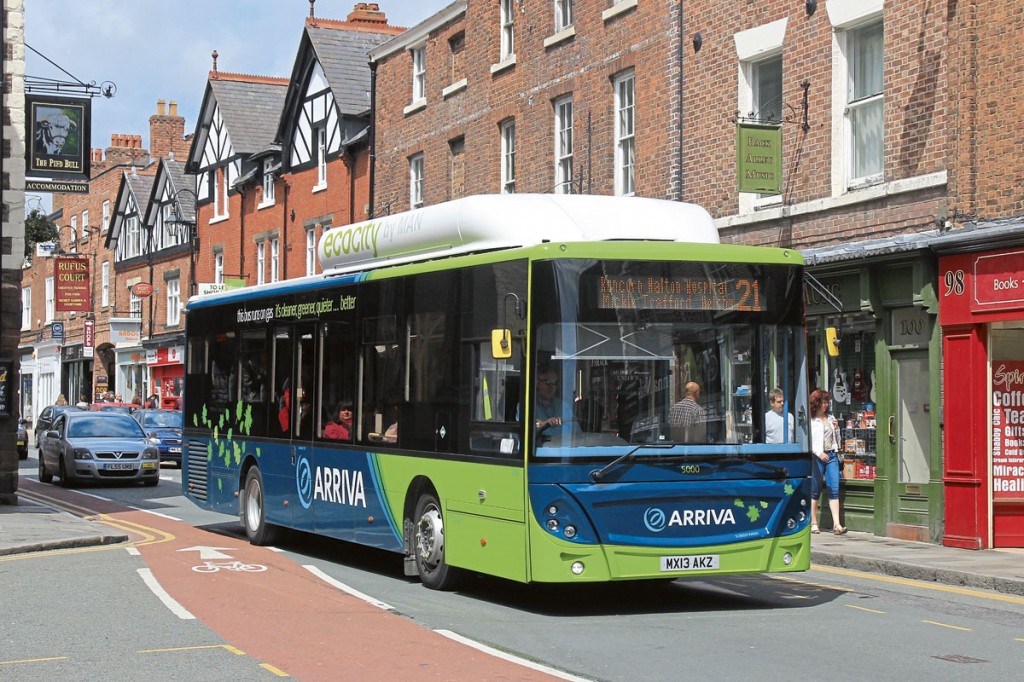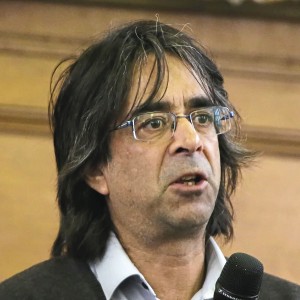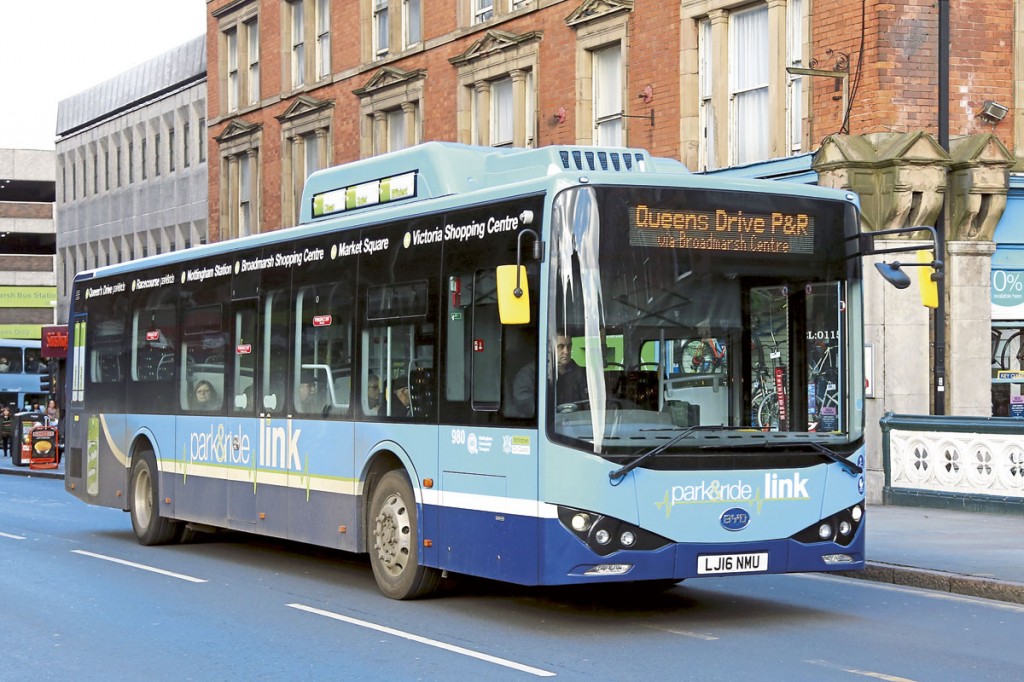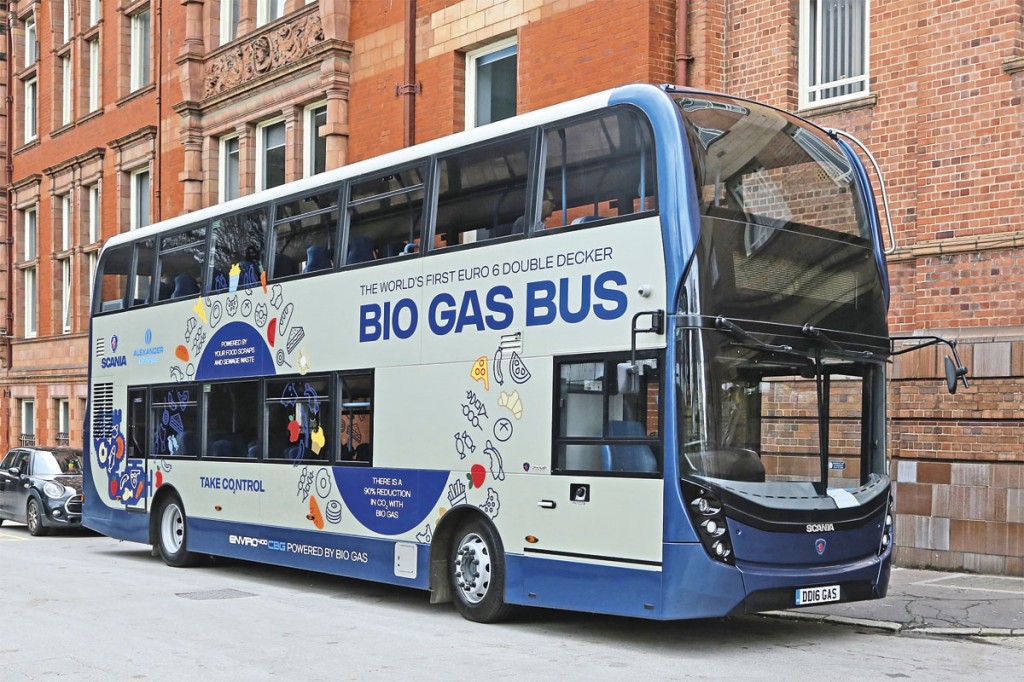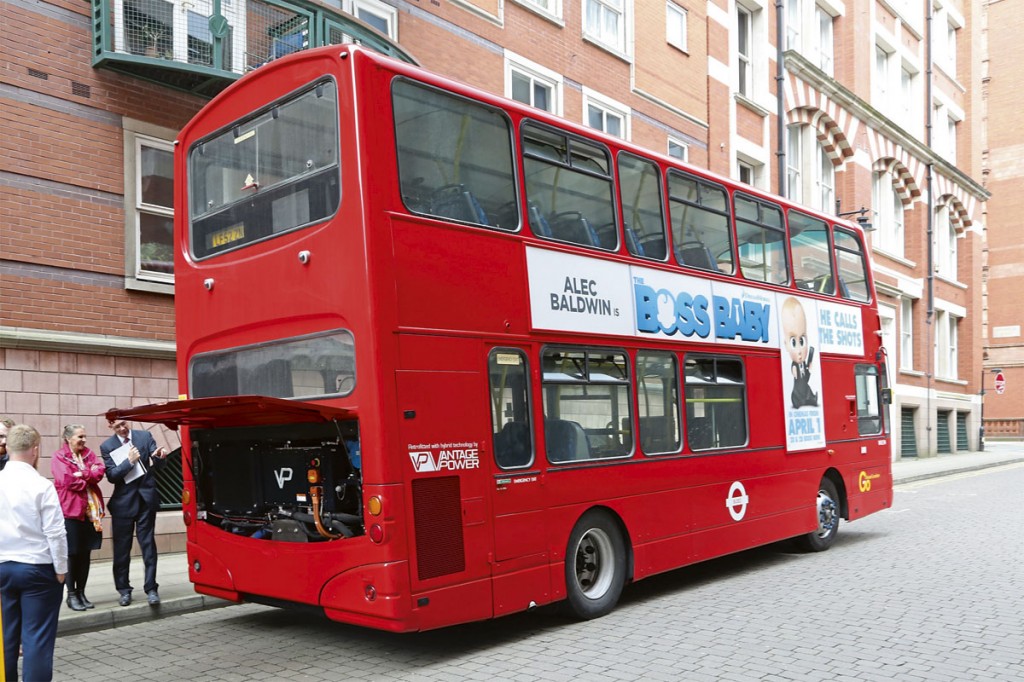LowCVP Workshop
Manchester hosts the first event in LowCVP’s programme to share experiences in the selection and operation of Low Emission Buses (LEBs)
Manchester University’s Sackville Street Building has a long association with forward looking engineering and its Great Hall provided a fitting location for the first of LowCVP’s LEB workshops, moderated by its Bus Working Group Chair, Mike Weston.
In his introduction, Mike praised the industry’s interest in the bus working group which was regularly attracting over 50 members, and encouraged further participation.
National Policy Outlook
Setting the scene, Head of Projects, LowCVP, Gloria Esposito charted the journey over the past decade from LCEB (Low Carbon Emission Bus) to LEB and the parallel Government funding streams it had influenced. Her figures showed there were, at the time of compilation, 4743 LCEBs in 38 UK regions. This included 3008 hybrids, 180 battery electric, 112 CNG, 18 Hydrogen Fuel Cell and five plug in hybrid vehicles plus diesel vehicles with electrified ancillaries. In addition, over 9000 diesels were running on B20 bio-diesel.
The LEB accreditation scheme tests vehicles over a real world bus cycle and awards a certification to manufacturers whose vehicles are Euro6 certified or zero emission and produce at least 15% greenhouse gas savings on a well-to-wheel basis compared to a Euro5 diesel equivalent. 18 models are currently certified and eligible for the Low Emission Bus Scheme under which 326 vehicles were supported in 2016. Further funding for both new and retrofit LEBs is expected with the coming launch of a £100m OLEV fund. In support of this, Gloria revealed that a ‘Clean vehicle retrofit accreditation scheme’ was being prepared by LowCVP to support the clean up of older vehicles to Euro6 emission standards.
Gloria’s presentation also covered the National Air Quality Action Plan and the introduction of Clean Air Zones. There would be two types of the latter, mandatory as in London (and five other cities already announced although Gloria suggested this number could grow to 25) and non mandatory local measures in other local authority areas. The Plan would be out for consultation in mid April with a final report due in July. Gloria described the Plan as ‘a huge opportunity for the bus industry to set itself as THE urban mobility solution for the future.’
GM Transport Strategy 2040
Welcoming the workshop to Manchester, Interim Head of Strategic Planning and Research, TfGM, Nicola Kane, encouraged attendees to experience two high profile bus projects in the city. She reported that the Vantage Busway was now carrying 50,000 passengers a week in high quality vehicles whilst work was progressing on Oxford Road, ‘a bus priority project but delivered in an innovative way to provide a better environment for all.’
Nicola said integration was at the heart of GM’s Transport Strategy for 2040, moving from a focus on modes and districts to one based on people, places and seamless journeys. Transport planning would be integrated with the development of new houses and jobs with an expectation of an additional 600,000 journeys daily by 2035. The focus would be on customers, the environment and improving the quality of life.
Buses were referred to, alongside trains and Metrolink, as part of ‘a fully integrated public transport system with high capacity for passengers and freight, that offers an attractive choice to support a rapidly growing City Region.’ Nicola’s presentation concluded with a look at the bus’ role in delivering the region’s air quality ambitions. Her overview of the current situation suggested that buses, based on the local vehicle parc in April 2016, whilst making up 1% of vehicles on the region’s roads, accounted for 11% of NOx emissions. There was a potential air quality management area plan shown which encompassed not just Manchester city centre but also some suburban centres and many major routes across the region.
City of York Clean Air Zone
Against a backdrop image of York’s historic centre, Programme Manager, City of York, Derek McCreadie, spoke of the ‘light bulb moment’ some five years ago when he personally became aware of the impact of poor air quality on health. On a still evening the concentration of NOx in the vicinity of the bus stops north of the Ouse bridge caused his heart rate to increase and brought the realisation about his role, ‘this is not just a job, this is for the people.’
Planning for the City of York Clean Air Zone (CAZ) significantly predated the Defra announcement for other cities. In March 2012, an air pollution survey showed buses were a key contributor and the concept of ‘frequent buses’ was developed for the CAZ proposal published in July 2013. Targeting those individual vehicles that appeared most frequently in the CAZ was seen as the most economically beneficial way to quickly impact/reduce air pollution. Key ‘frequent buses’ were seen as those on the park and ride services, the city sightseeing tour and some local services.
In late 2012, a feasibility study showed the potential for electric buses and these were introduced to one of the park and ride services in summer 2014 with a second service and a prototype electric sightseeing tour bus following in the next year. To date the electric park and ride vehicles have covered some 1.3m kilometres.
The CAZ was give executive approval in December 2015 with a target of delivery by April 2018 and LEB funding is proving beneficial in delivering it (with 12 Optare Versa EVs funded under the green bus fund, and a third park and ride route going out for tender for more zero emission vehicles).
The Low Emission Bus Guide
Project Officer, LowCVP, Daniel Hayes promoted the role of the Low Emission Bus Guide as, ‘increasing the amount of robust information available to operators and local authorities about the different technologies available.’ It contains details of all accredited LEBs and will be kept up to date on the organisation’s website as new models are accredited. The Guide can be downloaded from the LowCVP website (www.lowcvp.org.uk) where copies of the trilogy of reports on bus developments compiled for Greener Journeys and the presentations from this workshop are also available.
Hybrid in Leeds
The first of five presentations covering experiences with the operation of LEBs was delivered by Head of Engineering, Arriva Yorkshire, Tom Large. Tom has a fleet of twelve Volvo B5LH parallel hybrids operating between Leeds and Wakefield and also experienced the ADL Enviro 350H series hybrid whilst working with Stagecoach.
At 8.75mpg, the five year old Volvos are delivering around 20% better fuel consumption figures than equivalent diesels and reliability levels were similar, in the high 90%s. Performance, however, was route dependant with relatively low speed urban routes performing better, particularly where the series hybrid was concerned.
The maintenance costs of the hybrids were also higher than standard diesels although these had so far been fixed with an inclusive maintenance contract with Volvo. A good service was provided but at a significant cost and Tom was considering bringing the work in house when the contract expires in the same manner as has happened at Arriva NW.
Biomethane in Runcorn
Runcorn was an ideal choice for Arriva NW’s first gas buses in 2013 according to Fleet Engineer, Arriva NW, Dave Smith. It was an all single deck garage and there was a good gas supply nearby for the gas filling station that was installed by the Gas Bus Alliance in 2014. It has a capacity for filling 20 vehicles nightly and has proved 100% reliable.
Ten MAN Ecocity gas buses featuring a 12.8l dedicated gas engine were procured initially, their four tanks totalling 1136litres giving a range of around 300miles. In service, Dave calculated that they had saved 3.6m kg CO2 so far, alongside 95% reductions in NOx and PM against the vehicles replaced and a 21% reduction compared to the depots’ average fuel cost.
There were maintenance benefits too, particularly in cleanliness with no diesel filters, EGR systems and particulate filters to maintain although changing spark plugs was a new requirement. A further nine vehicles were now on order and although these represented an on cost of around £55k compared with diesel vehicles, nearly half of this was related to specific requirements of the operator. For Dave, the benefits of gas made it a fuel for now eliciting positive feedback from passengers and drivers alike.
Electric in Nottingham
Project Manager, Nottingham City Council, Steve Cornes emphasised the need for wide ranging planning prior to the introduction of electric vehicles and the benefit that can be gained from visiting systems already up and running. He had overseen the introduction of 58 electric buses to Nottingham and was regularly hosting visits from other interested authorities. Publicity was also key and he considered high profile launch events raised public and trade interest both locally and nationally.
After looking at the five Ws (What, Where, When, Who and Why?), Steve moved on to the how? and how much? highlighting some of the challenges that had been faced and the need to identify all potential sources of support funding. Selection of vehicles and charging locations sometimes threw up challenges such as charging positions being on opposite sides depending on the vehicle manufacturer.
Steve was pleased to report that the Nottingham Community Transport operated fleet was delivering around 30% regeneration which meant less overnight recharging was required. The BYD vehicles were supplied with two 40kW chargers but in practice only one was required and this could result in a future reduction of the electricity supply company’s standing charge. This ASC (Available Supply Capacity) charge covers the peak load expected to be taken and was based on using both chargers for each vehicle.
Two key areas Steve looked at were monitoring systems and vehicle climate control. He was impressed with the ViriCiti package which was used to continuously monitor each vehicle’s battery performance and identify any issues with remote overnight charging. Heating was a challenge and the potential for in depot pre-warming was being looked at. A decision had been made to limit air conditioning provision to the driver’s area only, additional ventilation and white roofs being chosen to mitigate the few hot days each year.
Looking forward, Steve was keeping a close watch on Vehicle to Grid (V2G) developments which could be beneficial to the operators of both the vehicles and the electric network, noting that his fleet had in total some 8.4MWh of battery capacity.
Efficient Diesel
Before discussing the impact of First Group’s vehicle testing programme at Millbrook, Technical Projects Manager, First Group, James Blackshaw reminded the audience that even older buses still had a part to play in improving air quality by displacing large numbers of cars from the road. His figures showed around one in six First Group buses in the UK were now low carbon certified with a mixture of efficient diesel, hybrid, electric and hydrogen power.
The Millbrook test cycle (FMFET – First Group Millbrook Fuel Economy Test) had been developed using GPS data gathered from actual operations across the UK in 2012/3. Used from 2014, it was representative, repeatable and independent as Millbrook’s own drivers undertook the tests. The results had driven a range of vehicle developments which supported low carbon accreditation of vehicles without hybridisation and were expected to contribute to further improvements in fuel economy and emissions during 2017.
Referring to Euro6 diesel vehicles as ‘the most cost effective new bus solution to improving air quality,’ James showed that testing of Euro6 double deckers had delivered a NOx output of 0.005g/km, around 1% of the figure quoted by DfT as the average from 19 Euro6 car models.
Retrofit in Manchester
TfGM provides a fleet of 94 yellow school buses for operators to fulfil contracts across the City Region. Alongside 53 Optare Versa hybrids, the fleet includes 41 Iveco Scolabuses. From 2013, the latter have been upgraded to Euro5 standard or better in the ‘setting an example’ programme covered by Fleet Manager, TfGM, David Ives’ presentation. The project commenced with the 34 Euro3 vehicles that received exhaust treatment systems from Baumot and HJS in equal numbers, the seven Euro4 vehicles followed in 2015, all with Baumot systems.
Each vehicle required three to four workshop days and an investment of around 10% of the cost of an equivalent new Euro6 vehicle, supported by grants from the Clean Bus Technology Fund. The work also included idle limiters and fast acting demisters to limit idling. It is planned to add telematics to them in the near future to support real time monitoring of driver and vehicle performance. The project was not without its challenges, the existing chassis equipment layout was found to be inconsistent between vehicles and a number of ECU failures were initially experienced, the latter were found to be primarily related to attempts to jump start the vehicle.
The vehicles were subjected to testing on the London Bus Cycle at Millbrook before and after conversion, and again after two years. The results for the Baumot equipped vehicles showed a maintained reduction of over 99% in NOx whilst almost 99% was achieved by the HJS equipped vehicles. In all cases, the improvement in PM output was significant but the gains were tempered by small increases in CO2 output and fuel consumption.
Trade Support
That the work of LowCVP is seen as influencial to the future of bus operation was demonstrated by the level of trade support for the event. Within the Great Hall, there were information stands from ADL, BAE Hybrid Systems, BYD, Scania, Volvo, Wrightbus, Vantage Power, Magtec, Optare, HJS, Argent Energy and Twintec Baumot, all keen to share information on how they could help operators and local authorities towards a low emission future.
The location had limited opportunity to display full size vehicles with one of the two exhibits having to be located more distant from the venue. Outside the Sackville Street building was the Scania biomethane double deck demonstrator with ADL Enviro400CBG bodywork that was first shown at Euro Bus Expo 2016 and, after inspections by a range of operators, is soon to commence its first in service demonstration.
In a side street nearby, Vantage Power made available for inspection one of the six Wright Gemini bodied vehicles that it is retrofitting as range extended hybrids for three London operators. Destined for Go-Ahead London and refurbished internally and externally by Hants and Dorset Trim, the 14 year old vehicle was very tidily presented. The previous diesel drive train has been replaced by Vantage Power’s hybrid drive system incorporating a Cummins ISBe4 Euro6 diesel engine and 15kWh battery pack. Look out for a full report on the work being undertaken by Vantage Power in Bus and Coach Buyer shortly.
Going Forward
The LowCVP will be hosting three more regional workshops across the UK in 2017/18 for local authorities and small bus operators to learn more about the low carbon options available. If you would like to register an interest in attending a future workshop, please send your details to [email protected].
LowCVP also produces a monthly newsletter which provides all the news on policy, funding streams and latest developments relating to low carbon transport and fuels, which can also be accessed via the website.


